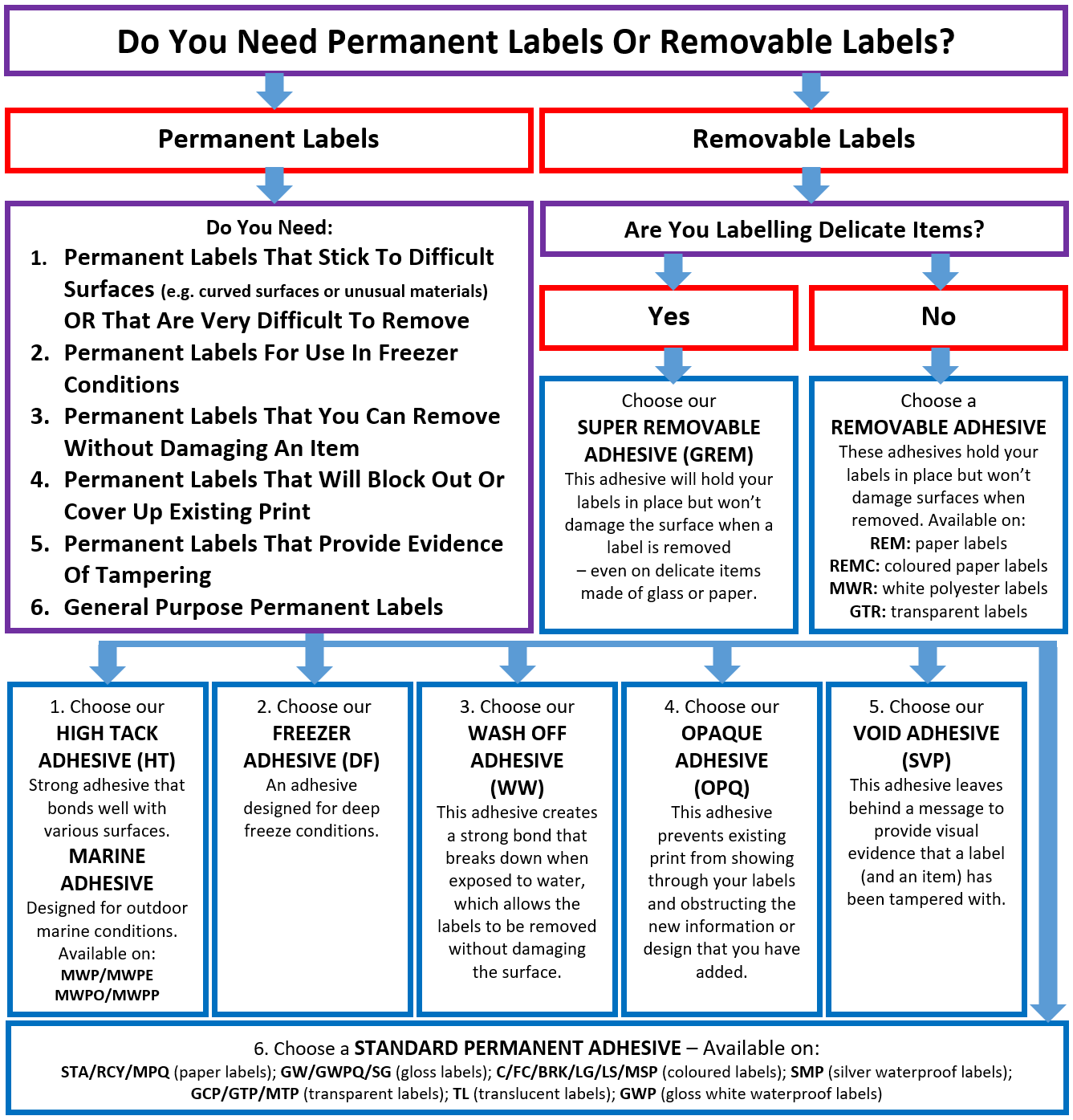How To Choose The Right Label Adhesive
Different label applications require different types of label adhesives - each with its own set of properties.
This means that it’s really important to make sure that the adhesive you choose is the right one for your particular label application. Here at Label Planet, our adhesives range from extremely strong permanent adhesives to extremely light removable adhesives, with a few speciality options thrown in for good measure – which means we should have an adhesive to suit all kinds of applications.
Here’s a basic guide to the different adhesives we supply (and what they’re best at):
High Tack
Our High Tack adhesive is the most popular choice if you need a strong permanent adhesive but find that standard adhesives aren’t quite up to the job. This adhesive provides great adhesion to a range of surfaces AND meets the German BgVV standard for indirect and short term contact with dry and moist foods.
This adhesive is available on matt white paper labels.
Marine
One of our speciality adhesives; this permanent adhesive provides good adhesion on a range of surfaces AND meets the BS5609 part 2 standard for marine immersion, which means it is an ideal choice for label applications that will involve a label being exposed to or immersed in water (for example; labels on outdoor equipment, product labels on cosmetics that will be used in bathrooms etc).
This adhesive is available on our polyester, polyethylene, polyolefin, and polypropylene ranges, which are highly durable, waterproof labels that are perfect for use as outdoor labels.
Permanent
Our standard permanent adhesive provides a good level of adhesion to a range of surfaces, which makes it ideal for a range of general purpose label applications.
This adhesive is available on the following label ranges: standard paper, recylced paper, premium paper, gloss paper, gloss photo quality paper, semi-gloss paper, Kraft paper, coloured paper, fluorescent paper, gold & silver paper, gloss polyester, silver polyester, mirrored silver, gloss transparent polyester, and matt transparent polyester.
Removable
Our standard removable adhesive provides a good level of adhesion to a range of surfaces BUT will also remove cleanly and easily once the labels are no longer needed (without leaving behind any adhesive residue), which makes this adhesive ideal for applications that require temporary labels that can be removed when they are no longer needed or become out of date.
This adhesive is available on the following label ranges: standard paper, coloured paper, gloss transparent polyester, and matt white polyester.
Super Removable
An alternative to our standard removable adhesive; this removable adhesive was specifically designed for use on delicate materials such as paper and glass, which are more easily damaged when a label is removed – this super light adhesive can be applied to even the most delicate of items before removing cleanly and easily when the labels are no longer needed. It is commonly used to create product labels on items that are delicate or are intended to be sold as gifts, as well as being used to identify lots in auction houses.
This adhesive is available on matt white paper labels.
Deep Freeze
Another speciality option, this adhesive is designed for use on items that will be stored and/or used in deep freeze conditions (such as frozen foods or medical/research samples); these labels can be stored in temperatures between -40°C to +60°C and comply with the German BgVV standard for indirect and short term contact with dry and moist foods.
This adhesive is only available on matt white paper labels and should be printed with a laser printer to ensure that the print remains legible even if the label is exposed to condensation.
Opaque
A speciality option designed to completely block out any existing design or print work on a surface when a label is applied over the top; this adhesive is ideal for labels that are being used to cover up mistakes, update information, or to recycle packaging.
This adhesive is used on our opaque paper labels.
Choosing the right adhesive is a highly important part of sourcing the best labels for your particular label application and – as with anything – testing the labels in the actual conditions you need them to work in is the best way to make absolutely sure that you’ve got the right adhesive for the job. This is why we offer a free sample request service, so you can give our labels (and their adhesives) a trial run before you place an order.
To help you choose the right adhesive, try using our simple flowchart below; answer two simple questions and we'll point you towards the type of adhesive that best suits your application:

You can find out more about each of the adhesives we supply, along with the products that they are available on, by visiting our List Of Label Adhesives page; simply click on the View Products links to find out more about a label range (including what sizes are available) or to place an order. To request a sample, simply fill in our online Sample Request Form or contact our Customer Service Team to discuss your requirements.
 Label Planet
Label Planet